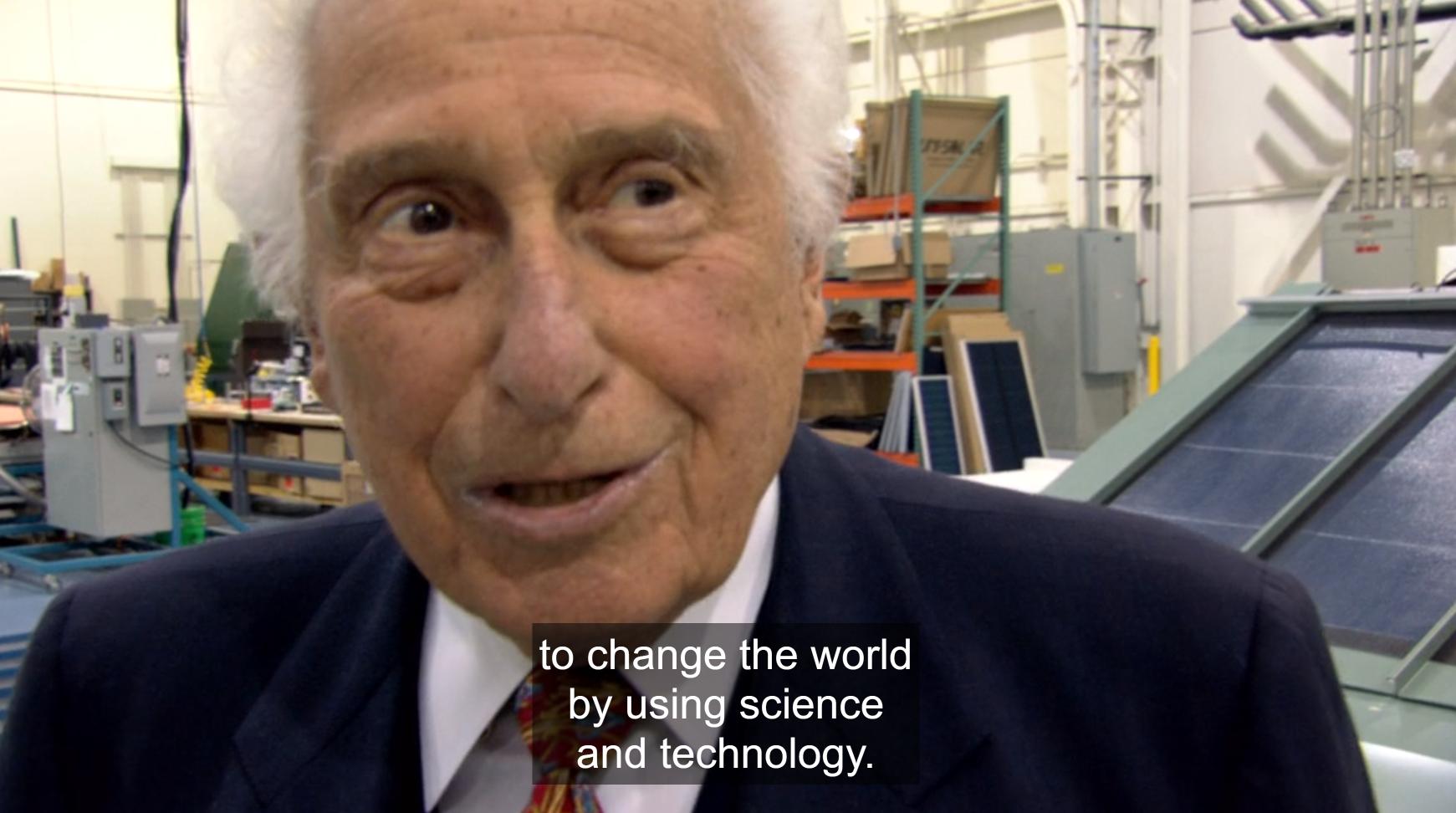His father was a scrap dealer; used to take his son around the factories: Who is Stanford Ovshinsky?
That son became one of the very important inventors of the USA. He received many patents that are inspiring today. Here is the inventor adventure of the son of a Lithuanian Jewish family:

Benjamin Ovshinsky, a Lithuanian Jew who immigrated to the United States in the early 20th century, certainly did not expect his son Stanford to become one of the greatest inventors of his time, and that his ideas would guide generations to follow.
When Stanford was born on November 24, 1922, his father was a scrap metal collector. Ovshinsky often took his son to nearby factories, where he procured unwanted, broken, or damaged parts and equipment. Thanks to these trips, Stanford had the opportunity to see many machines and became interested in how they were made. So it's no surprise that he's looking for a job in mechanics after graduating from high school and even during his studies.
Stanford Robert Ovshinsky (November 24, 1922 – October 17, 2012) was an American engineer, scientist and inventor who over a span of fifty years was granted well over 400 patents, mostly in the areas of energy and information. Many of his inventions have had wide-ranging applications. Among the most prominent are: the nickel-metal hydride battery, which has been widely used in laptop computers, digital cameras, cell phones, and electric and hybrid cars; flexible thin-film solar energy laminates and panels; flat panel liquid crystal displays; rewritable CD and DVD discs; hydrogen fuel cells; and nonvolatile phase-change memory.
After working for a few years at the Goodyear factory and similar, as a mechanical engineering specialist, he opened his own factory but sold it fairly quickly and moved to Detroit in the early 1950s. There he went to work for the Hupp Motor Company and developed, among other things, electric power steering, but this steering wheel was not put into production. His failed career in the automotive industry ended with a return to his own business. First General Automation, then Energy Conversion Laboratory (later renamed Energy Conversion Devices), and finally - Ovshinsky Innovation LLC...
Our inventor had the opportunity to combine knowledge from various fields by conducting independent research and projects. Subsequent projects and years of work have resulted in discoveries in the fields of automation, cybernetics, as well as neurophysiology due to Ovshinsky's particular interest in nerve cells. The result was an amorphous thin-film switch model that allowed semiconductor technologies to evolve and take them in entirely new directions. Another important invention, based on groundbreaking research, was CDs and DVDs, the data storage media once found in every home, although they are no longer used. Over time, new technologies were also used to develop flat panel liquid crystal displays and other devices.
Ovshinsky combined two very important features in his work - as a visionary, he was able to imagine and create completely new solutions and technologies. As an effective engineer, he was able to shape these ideas and put them into practice. For example, this was the case for flat-screen TVs and smartphones, which he thought up in 1966. In 1979, Ovshinsky began selling solar panels, which, more than 40 years later, are now increasingly installed on our roofs, enabling us to generate clean energy. This also applies to the nickel metal hydride (NiMH) batteries the inventor used to power electric cars in 1982. However, the development of this technology was blocked by automakers. In total, Ovshinsky has received more than 400 patents, and his inventions or devices based on these patents accompany us every day. Over the years he collaborated with some of the greatest scientists of his time, such as John Bardeen or David Adler, and has been compared, for example, with Thomas Edison and Albert Einstein.
All readers interested in technology will certainly notice that we are still gradually realizing the vision of the world that Ovshinsky dreamed of. Thanks to economical photovoltaic panels and accessories, solar energy is used in many businesses and homes today. However, renewable energy is still far from being the dominant form of energy. The electric car industry is highly standardized (e.g. connectors and cables) but not as much as the combustion engine industry.
However, you can also look on the bright side. Although NiMH technology is gradually being phased out, batteries and rechargeable batteries are becoming mandatory equipment for many electronic devices. Chargers and connectors (e.g. USB C) are used universally, so getting rid of them is becoming increasingly difficult. Moreover, we use less and less energy using technologies such as LCD screens OLED displays (based on Ovshinsky's inventions), and even LED lights. High-performance semiconductor chips are also a legacy of the American inventor's work – particularly in digital electronics.
Ovshinsky owes his career not only to his keen mind and tremendous knowledge but above all to his broad horizons, vision, and determination to realize it. Of course, not every engineer or DIY enthusiast will be able to match the achievements of Stanford Ovshinsky. However, each of us can afford to take a broader view of our interests, set an ambitious goal, and work towards it slowly and consistently. Who knows what ideas will emerge?
